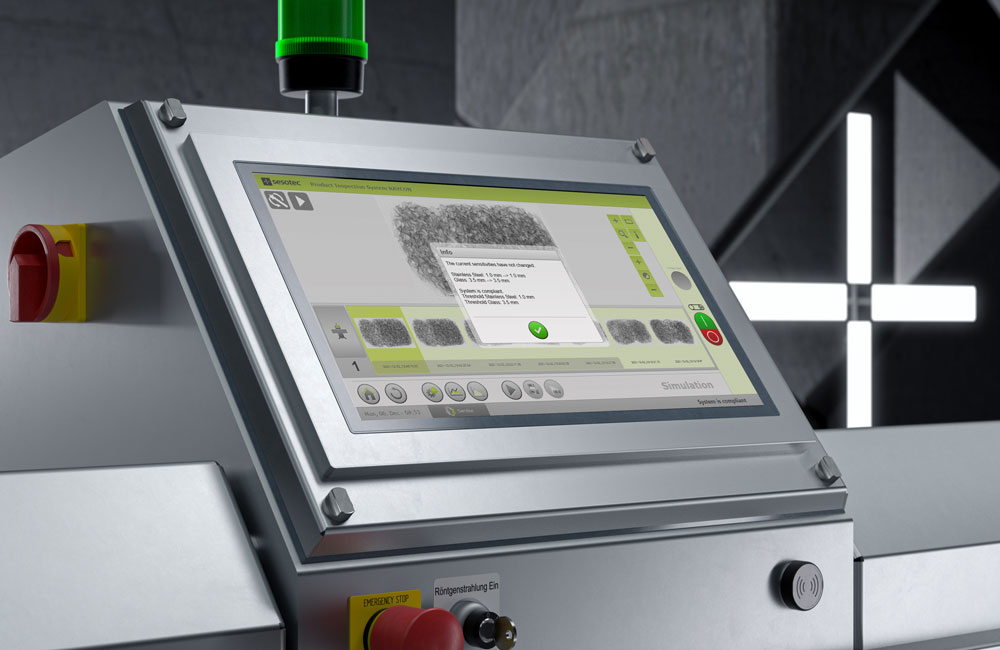Food Safety
Aug 30, 2022 |
How foreign particles detection is one of the key to sustainable food production

This
article explores the effects of an unsafe, wasteful food processing on public
health and on our economic well-being, highlights the role of technological
innovation in alleviating the problem, and offers a brief digest of recent
breakthroughs in the foreign object detection field. These science-based
advances are already making a difference leading our society toward
sustainable, productive food systems. Put another way, science-based
technological change is the driving force beginning to turn the tide in the
effort to process food products in a manner that is sustainable and efficient.
What does food sustainability mean?

The United Nations’ Food and Agriculture Organization defines food sustainability as “the idea that something (e.g., agriculture, fishing or even preparation of food) is done in a way that is not wasteful of our natural resources and can be continued into the future without being detrimental to our environment or health.” To be sustainable, moreover, food production must also be economically viable and profitable, allowing farmers and workers along the supply chain to support themselves while providing consumers with affordable nutritional choices.
Why is sustainability in the food industry more important than ever?
Current
global conditions make the issue of sustainability in the food industry more
relevant than ever. A growing world population, coupled with a finite volume of
raw materials, rising prices and much needed quality assurance regimes, present
stark new challenges to the goal of feeding the planet while preserving the
environment for future generations.

A further obstacle to sustainable food systems is the massive amount of food waste still prevalent in our society. Case in point: As a study points out, about a third of all food products worldwide end up discarded from farm to landfill -- even as United Nations data finds nearly nine percent of the world’s population is currently going hungry. Surely, we can do much better, in particular as runaway global population growth over the next 30 years will require a staggering 70% boost in food production.
Enduring food safety concerns also remain a top threat to sustainability, with data out of Germany showing recalls due to foreign particle contamination are on the rise, and a study from the United States listing metal, plastic and glass found in food as the top causes of recalls – which cause millions in direct economic losses and untold damage to company brands.
Technological innovation is a key part of the solution to the challenges outlined above, as efforts to boost foreign particle detection are essential to curtailing recalls and eliminating waste. Fortunately, as we’ll see below, the food industry has made significant strides in the development of innovative contaminant detection and inspection technology, helping to lead the world toward more sustainable food production.
Food Safety: The challenges of the 21st Century
As noted above, an ever growing global population will require a very significant increase in food production over the next few decades of this century. To bring it into fruition and mitigate hunger in our world, both higher productivity and waste reduction will have to go hand in hand.
While the food safety picture has gotten undoubtedly brighter over the last century, we are by no means out of the woods. Globalization, for example, now makes consumers subject to potentially lax safety rules in food exporters’ home countries, and as noted above modern production and packaging processes have created a set of challenges, namely those brought about by the presence of foreign bodies such as plastic, metals, glass and bone fragments in our food.
Foreign body contamination has stark implications for public health and also presents huge challenges for food manufacturers, requiring constant technological innovation to avoid untold damage to branding and reputation. A good illustration of this issue was the massive recall of a popular chocolate bar some years ago, after the now-dated technology it used to detect contaminants mistook plastic for the caramel substance as the bar’s core – leading to the recall and waste of candy bars contaminated with plastic in 55 countries around the world.
All of the above serves to emphasize the need for a transition to sustainability in food production and the constant development of technology to ensure that our food supply is both plentiful and consistently free of foreign bodies. Lavish food productivity is not at odds with safety.
Constant innovation is making a difference in terms of sustainability
Technological
innovation is already making a tremendous difference. If governance has been
key in efforts to ensure the safety of our food supply, breakthrough scientific
advances have long been the driving force. The use of inspection technology to
detect foreign substances in food, as well as advances in food traceability
that boost the capacity to follow the movements of a food product throughout
the supply chain and stages of production. Modern foreign body detection helps
to an early detection of contaminants and avoid recalls and this leads
automatically to sustainability through less food waste and a more profitable
food production.

In an era of breathtaking technological advances across the board, the food industry has in recent years seen its share of major innovations that are revolutionizing the field of foreign object detection in our food supply. For example, big strides have been made in recent years through the use of artificial intelligence on the problem of metal detection in foods with a high product effect (intrinsic conductivity) that had long hindered conventional metal detectors.
New-generation X-ray devices also make an important contribution to food safety and thus also to sustainability because they detect a wide variety of foreign bodies such as glass, stones, bones.
Overall, these technological developments in the industry are guided by principles that marry a much-enhanced ability to detect contaminants with features that boost usability and productivity. Examples of this are the use of very durable components and hygienic designs that leave fewer surfaces for dirt to attack. In addition, top-of-the-line foreign-body detection devices are increasingly easy to operate and come with high efficiency maintenance and expert service advice on installation, adjustment and the condition of the detection system – as well as reliable arrangements for repairs should they become necessary.
In conclusion, challenges certainly remain to ensure even stronger food safety. With the right equipment, every manufacturer can efficiently fulfill all of today’s standards and demands for safe and sustainable food processing.




